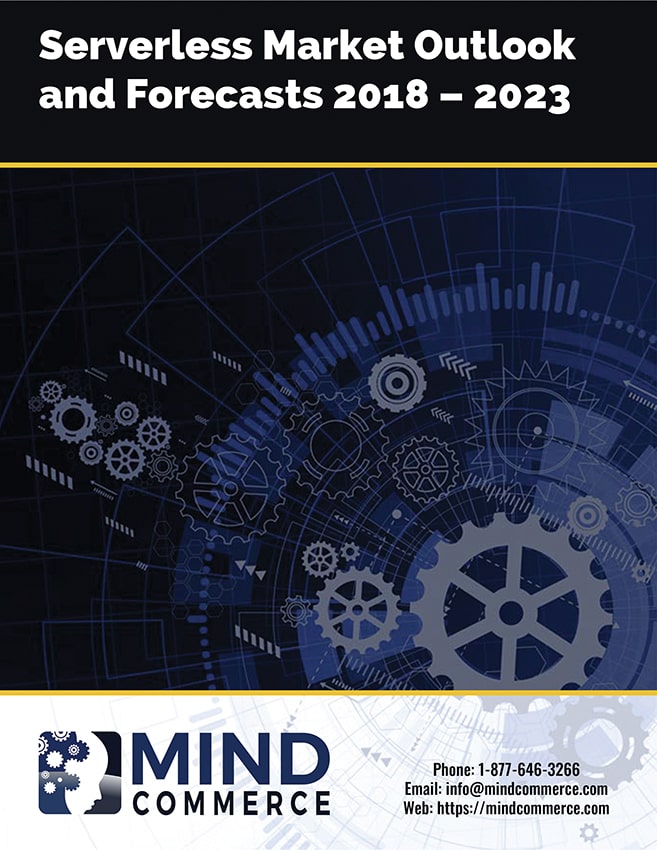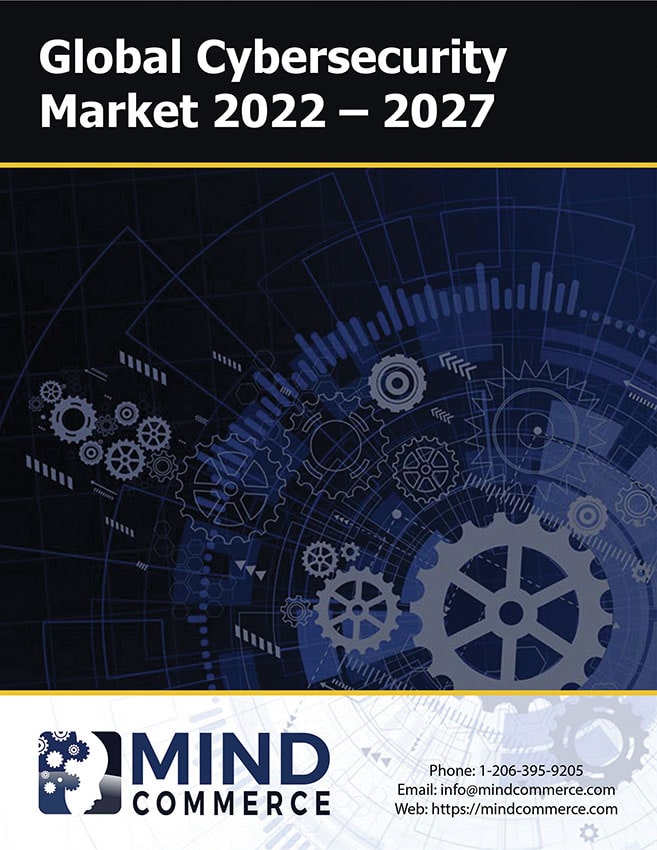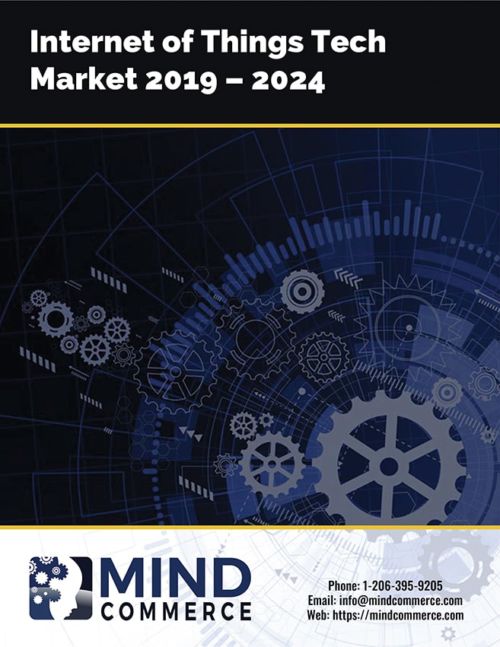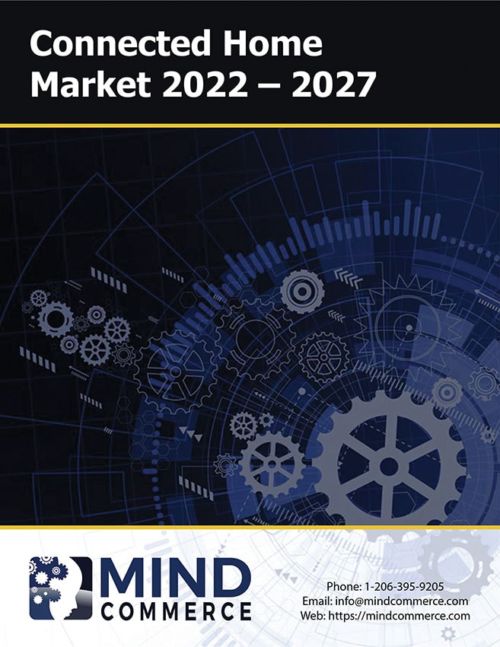Description
A misnomer term, “serverless” does not imply no-need for servers. What it does mean is that an entity within the serverless market ecosystem that owns/controls a given system does not need to procure/lease and/or provision servers (or virtual machines) for “back-end” code and operations. The back-end refers to the data layer of software as compared to the “front-end”, which pertains to the presentation layer of the stack.
From an ICT infrastructure perspective, serverless architecture represents a model in which applications are abstracted from hardware and software. This models may be viewed as Function as a Service (FaaS) in the sense that a third-party is responsible for infrastructure management, separating server operations from software development, maintenance, and evolution.
Third parties within the serverless market ecosystem may be any entity other than the software developer, service provider, enterprise or consumer. For example, a given datacenter operator may provide various Back-end as a Service (BaaS) functions while another datacenter (or enterprise themselves) operate the front-end. This allows for flexibility as apps may be developed without any provisioned servers (e.g. “serverless”) and/or in the more traditional framework. It also allows for an enterprise to have much greater operational flexibility as software may be deployed in various combinations of FaaS, BaaS, and off-premise and/or on-premise configurations.
Serverless Market Dynamics
There are a few key operational challenges involved within the serverless market ecosystem, which include architectural complexity, lack of operational management tools, and loss of control due to exposing APIs to third parties. Despite these issues, serverless computing is anticipated to be a great benefit to IT infrastructure service providers as well as enterprise in terms of expanded deployment options, improved operational flexibility, and reduced costs. These benefits are passed down to the end-user through reduced cost of operations as improved enterprise margins facilitates the ability to offer more competitive pricing for their own products and services.
Serverless Market Report
This report assesses the serverless computing market including companies, strategies, solutions, applications, and services. The report evaluates the market for serverless computing by technology, use cases, application areas, and industry verticals. This includes analysis of serverless computing for Artificial Intelligence (AI) and Internet of Things (IoT) markets. This is further broken-down by AI type and IoT segment (consumer, enterprise, industrial, and government) respectively. The report also assesses the serverless market by deployment type, business size, connectivity, and cloud deployment model variants. Industry vertical coverage includes serverless computing in support of financial services, retail, healthcare, manufacturing, agriculture, and more.
Click Here for More Mind Commerce Computing Reports
Table of Contents
1.0 Introduction
1.1 Serverless Computing Architecture
1.2 Serverless Computing Considerations
1.3 Serverless Computing Market Drivers
1.3.1 Reduction of Development, Operation, and Scaling Costs
1.3.2 Operation Optimization and Faster Execution
1.3.3 DevOps and the Serverless Ecosystem
1.3.4 Growth of Microservices Architecture supporting New Applications
1.3.5 Simplifying the Use of Cloud
1.3.6 Proliferation of Cloud Based IoT Apps with embedded AI Capabilities
1.3.7 Progress in Emerging Markets and Related Industry
1.3.8 Flexibility in Billing System with Pay per Use Model
1.4 Serverless Computing Market Challenges
1.4.1 Vendor Lock-in Ecosystem Creates Architectural Complexities
1.4.2 Threats Associated with Substitute Services and Third Party Services
1.4.3 Risks Associated with Policy, Security, and Compliance
1.4.4 Implementation Difficulties Related with Latency, Duration, Testing, Discovering, Debugging, and API Gateways
1.4.5 Not suited with High Performance Computing Workloads
2.0 Technology and Market Analysis
2.1 Serverless Technology and Virtualization
2.2 Function as a Service (FaaS) Ecosystem
2.2.1 Serverless Backend as a Service (BaaS)
2.2.2 State Management and Open Source Architecture
2.2.3 Abstraction Layers
2.2.4 Startup Latency and Tooling
2.2.5 API Gateway Management
2.2.6 Horizontally Scalable
2.2.7 Language Agnostic Endpoints
2.2.8 Serverless Apps
2.2.9 UI Driven vs. Message Driven Application
2.3 Merging Container with Serverless and Cloud
2.4 Serverless Database Provisioning
2.5 No Infrastructure Application Architecture
2.6 Serverless Security
2.7 Event-Driven Architectures
2.8 Kubernetes Containers
2.9 Serverless Computing Future
2.9.1 Virtual Machine to Serverless Framework
2.9.2 State Management and Tooling
2.9.3 Education and Platform Upgradation
2.9.4 Transparency Vision for Vendor
2.9.5 Growth of Multiple Pattern
2.9.6 Globally Distributed Architecture
2.9.7 Testing and Portable Implementation
2.10 AI Technology, Applications, and Edge Computing
2.11 Cellular vs. Non-cellular Connectivity
3.0 Application and Value Chain Analysis
3.1 Serverless Computing Application
3.1.1 Event Driven Computing
3.1.2 Live Video Broadcasting
3.1.3 Processing IoT Data
3.1.4 Shared Delivery Dispatch System
3.1.5 Web Application and Back-ends
3.1.6 Application Scalability
3.1.7 Sales opportunities and Customer Experience
3.2 Value Chain Analysis
4.0 Company Analysis
4.1 Amazon Web Services Inc.
4.2 Google Inc. (Google Cloud Platform)
4.3 Alibaba Cloud
4.4 Iron.io
4.5 IBM Corporation (IBM Cloud Functions)
4.6 Serverless Inc.
4.7 Microsoft Corporation (Azure Cloud)
4.8 Huawei Software Technologies Co. Ltd
4.9 Dell Boomi Inc.
4.10 Joyent Inc.
4.11 LunchBadger
4.12 Oracle Corporation
4.13 Other Companies
4.13.1 CA Technologies
4.13.2 Rackspace Inc.
4.13.3 TIBCO Software Inc.
4.13.4 Platform9 Systems Inc.
4.13.5 Syncano
4.13.6 StdLib
4.13.7 Realm
4.13.8 Backand
4.13.9 LEVARNE
4.13.10 Snyk Ltd.
4.13.11 Dynatrace
4.13.12 Fiorano Software Inc.
4.13.13 Manjrasoft Pty Ltd
4.13.14 SixSq
4.13.15 Twistlock Ltd.
4.13.16 Salesforce
5.0 Serverless Computing Market Analysis and Forecasts
5.1 Global Serverless Computing Market Forecast 2018 – 2023
5.1.1 Total Serverless Computing Market
5.1.2 Serverless Computing Market by Segment
5.1.2.1 Serverless Computing Market by Solution Type
5.1.2.2 Serverless Computing Market by Service Type
5.1.2.2.1 Serverless Computing Market by Professional Service Type
5.1.3 Serverless Computing Market by Cloud Deployment Type
5.1.4 Serverless Computing Market by Enterprise Sector
5.1.5 Serverless Computing Market by Connectivity Type
5.1.6 Serverless Computing Market by Industry Vertical
5.1.7 Embedded AI Solution Market in Serverless Computing
5.1.7.1 Embedded AI Solution Market in Serverless Computing by AI Technology
5.1.8 Serverless Computing Solution Market in IoT
5.1.8.1 Serverless Computing Solution Market in IoT by Sector
5.1.9 Serverless Computing Solution Market in Edge Network
5.1.10 Serverless Computing Solution Market in Blockchain
5.1.11 Serverless Computing Solution Market in Virtualization
5.1.12 Serverless Computing Solution Market in Smart City
5.1.13 Serverless Computing Solution Market in 5G
5.2 Regional Serverless Computing Market Analysis and Forecasts
5.2.1 Serverless Computing Market by Region
5.2.2 North America Serverless Computing Market by Solution, Cloud, Connectivity, Industry Vertical, Emerging Technologies, and Leading Country
5.2.3 Europe Serverless Computing Market by Solution, Cloud, Connectivity, Industry Vertical, Emerging Technologies, and Leading Country
5.2.4 APAC Serverless Computing Market by Solution, Cloud, Connectivity, Industry Vertical, Emerging Technologies, and Leading Country
5.2.5 Latin America Serverless Computing Market by Solution, Cloud, Connectivity, Industry Vertical, Emerging Technologies, and Leading Country
5.2.6 MEA Serverless Computing Market by Solution, Cloud, Connectivity, Industry Vertical, Emerging Technologies, and Leading Country
6.0 Conclusions and Recommendations
6.1 Advertisers and Media Companies
6.2 Artificial Intelligence Providers
6.3 Automotive Companies
6.4 Broadband Infrastructure Providers
6.5 Communication Service Providers
6.6 Computing Companies
6.7 Data Analytics Providers
6.8 Equipment (AR, VR, and MR) Providers
6.9 Networking Equipment Providers
6.10 Networking Security Providers
6.11 Semiconductor Companies
6.12 IoT Suppliers and Service Providers
6.13 Software Providers
6.14 Smart City System Integrators
6.15 Automation System Providers
6.16 Social Media Companies
6.17 Workplace Solution Providers
6.18 Enterprise and Government
Tables
Table 1: Global Serverless Computing Market by Segment 2018 – 2023
Table 2: Global Serverless Computing Market by Solution Type 2018 – 2023
Table 5: Global Serverless Computing Market by Service Type 2018 – 2023
Table 6: Global Serverless Computing Market by Professional Service Type 2018 – 2023
Table 7: Global Serverless Computing Market by Cloud Deployment Type 2018 – 2023
Table 6: Global Serverless Computing Market by Enterprise Sector 2018 – 2023
Table 7: Global Serverless Computing Market by Connectivity Type 2018 – 2023
Table 8: Global Serverless Computing Market by Industry Vertical 2018 – 2023
Table 9: Global Embedded AI Solution Market in Serverless Computing by AI Technology 2018 – 2023
Table 10: Global Serverless Computing Solution Market in IoT by Sector 2018 – 2023
Table 11: Serverless Computing Market by Region 2018 – 2023
Table 12: Global Serverless Computing Market by Segment 2018 – 2023
Table 13: Global Serverless Computing Market by Solution Type 2018 – 2023
Table 14: Global Serverless Computing Market by Service Type 2018 – 2023
Table 15: Global Serverless Computing Market by Professional Service Type 2018 – 2023
Table 16: Global Serverless Computing Market by Cloud Deployment Type 2018 – 2023
Table 17: Global Serverless Computing Market by Enterprise Sector 2018 – 2023
Table 18: Global Serverless Computing Market by Connectivity Type 2018 – 2023
Table 19: Global Serverless Computing Market by Industry Vertical 2018 – 2023
Table 20: Global Embedded AI Solution Market in Serverless Computing by AI Technology 2018 – 2023
Table 21: Global Serverless Computing Solution Market in IoT by Sector 2018 – 2023
Table 22: Global Serverless Computing Market by Leading Country 2018 – 2023
Table 23: Global Serverless Computing Market by Segment 2018 – 2023
Table 24: Global Serverless Computing Market by Solution Type 2018 – 2023
Table 25: Global Serverless Computing Market by Service Type 2018 – 2023
Table 26: Global Serverless Computing Market by Professional Service Type 2018 – 2023
Table 27: Global Serverless Computing Market by Cloud Deployment Type 2018 – 2023
Table 28: Global Serverless Computing Market by Enterprise Sector 2018 – 2023
Table 29: Global Serverless Computing Market by Connectivity Type 2018 – 2023
Table 30: Global Serverless Computing Market by Industry Vertical 2018 – 2023
Table 31: Global Embedded AI Solution Market in Serverless Computing by AI Technology 2018 – 2023
Table 32: Global Serverless Computing Solution Market in IoT by Sector 2018 – 2023
Table 33: Global Serverless Computing Market by Leading Country 2018 – 2023
Table 34: Global Serverless Computing Market by Segment 2018 – 2023
Table 35: Global Serverless Computing Market by Solution Type 2018 – 2023
Table 36: Global Serverless Computing Market by Service Type 2018 – 2023
Table 37: Global Serverless Computing Market by Professional Service Type 2018 – 2023
Table 38: Global Serverless Computing Market by Cloud Deployment Type 2018 – 2023
Table 39: Global Serverless Computing Market by Enterprise Sector 2018 – 2023
Table 40: Global Serverless Computing Market by Connectivity Type 2018 – 2023
Table 41: Global Serverless Computing Market by Industry Vertical 2018 – 2023
Table 42: Global Embedded AI Solution Market in Serverless Computing by AI Technology 2018 – 2023
Table 43: Global Serverless Computing Solution Market in IoT by Sector 2018 – 2023
Table 44: Global Serverless Computing Market by Leading Country 2018 – 2023
Table 45: Global Serverless Computing Market by Segment 2018 – 2023
Table 46: Global Serverless Computing Market by Solution Type 2018 – 2023
Table 47: Global Serverless Computing Market by Service Type 2018 – 2023
Table 48: Global Serverless Computing Market by Professional Service Type 2018 – 2023
Table 49: Global Serverless Computing Market by Cloud Deployment Type 2018 – 2023
Table 50: Global Serverless Computing Market by Enterprise Sector 2018 – 2023
Table 51: Global Serverless Computing Market by Connectivity Type 2018 – 2023
Table 52: Global Serverless Computing Market by Industry Vertical 2018 – 2023
Table 53: Global Embedded AI Solution Market in Serverless Computing by AI Technology 2018 – 2023
Table 54: Global Serverless Computing Solution Market in IoT by Sector 2018 – 2023
Table 55: Global Serverless Computing Market by Leading Country 2018 – 2023
Table 56: Global Serverless Computing Market by Segment 2018 – 2023
Table 57: Global Serverless Computing Market by Solution Type 2018 – 2023
Table 58: Global Serverless Computing Market by Service Type 2018 – 2023
Table 59: Global Serverless Computing Market by Professional Service Type 2018 – 2023
Table 60: Global Serverless Computing Market by Cloud Deployment Type 2018 – 2023
Table 61: Global Serverless Computing Market by Enterprise Sector 2018 – 2023
Table 62: Global Serverless Computing Market by Connectivity Type 2018 – 2023
Table 63: Global Serverless Computing Market by Industry Vertical 2018 – 2023
Table 64: Global Embedded AI Solution Market in Serverless Computing by AI Technology 2018 – 2023
Table 65: Global Serverless Computing Solution Market in IoT by Sector 2018 – 2023
Table 66: Global Serverless Computing Market by Leading Country 2018 – 2023
License Types
Licensing Rights and Privileges
Our publications represent client privileged information. No material in them may be stored, reproduced, distributed, in whole or in part, without prior written permission from Mind Commerce.
License Types
Single-User: Provides the right to the purchaser or their designee to utilize a publication including reading, printing, and storing on one machine such as a laptop or desktop computer. This license is appropriate for an individual or single-person usage within a company.
Multi-User: Provides the right for a group of up to five people within an organization to utilize a publication including reading, printing, and storing on one machine for each respective user. (Note: Let us know if you need a special license for more than five people but less than an entire corporate site).
Enterprise Site: Provides the right for a Single Site of an Organization to store, read, and distribute a publication within its own organization. This licensing option is often chosen by businesses or NGO’s that have a single site/location.
Global Enterprise: Provides the right for an Entire Global Organization to store, read, and distribute a publication within its own organization (including placement on corporate intranet), but not distribute outside the enterprise to any third party. This licensing option is often chosen by large businesses, governments, or NGO’s to Benefit all Employees and also to Maintain Organizational Intellectual Property Compliance.
Payment Options
Mind Commerce offers flexible and convenient methods for ordering research and paying for purchases:
- Credit Card: Major credit cards via secure online, fax, or over the phone – Read More
- Purchase Order: We accept corporate PO to initiate a research order – Read More
- Prepayment: Purchase prepaid credit for future research requests – Read More
- Payment via Check, ACH, or Wire: Electronica of physical check – Read More
- Alternative Payments: Payment via a client’s PayPal account – Read More






